The Elder Scrolls series was always popular with players and critics, but it was the fifth mainline entry, Skyrim, that became the most popular one in the series. It became big enough that the game was ported and remastered enough times that it became something of a running gag that a platform was bound to see another release of Skyrim. The latest release for anything in the series is another remaster, and it was heavily rumored for some time. The Elder Scrolls IV: Oblivion got a surprise release right after the trailer dropped, and the results are interesting, depending on your outlook.
The game starts with a monologue from Emperor Uriel Septim VII, one of the characters who has been with the series for a good while. He has lived a long life, and he knows that his life will end soon, but he fears that war will soon be upon the land. His dreams tell of how the forces of Oblivion are waiting for the seal between their world and the land of Tamriel to break, but his dreams also tell of a hero that, unbeknownst to them, will save the kingdom. You happen to be that hero, sent to jail but destined to meet the emperor anyway as the ruler tries to flee to safety while his sons have all been assassinated. As the emperor's life is coming to an end, he confesses to you that he does have one more heir to the throne who has been hidden away for his safety. After giving you an amulet that only the right noble can bear, the emperor implores you to find his hidden son and help save the kingdom.
For those unfamiliar with the original release on PC, Xbox 360, and PS3, this is an improvement on some ideas seen in The Elder Scrolls III: Morrowind, but it is also a blueprint for what the team will do in The Elder Scrolls V: Skyrim. The character creation system isn't quite as deep as most modern games when it comes to cosmetic options, but you have at least 10 different races to choose from, with various options for classes and bonuses. The leveling system is quirky in that everything you do from jumping to getting hit to actually fighting gives you experience and helps you improve your stats in those given areas. Actually gaining a whole level is only done by going to sleep. The world levels up with you, so it takes plenty of work before you can find an enemy who you can wipe out with one hit. Enemies are rarely low-level enough to be a pushover if you're careless.
The main appeal is the world itself. The moment you leave the game's opening sewer level, you're given free rein to go wherever you want and do whatever you want. You still have a main quest to fulfill, but the world is dotted with enough activities and interesting people that it is common for players to find themselves distracted by bandit camps and hidden dungeons and stray oblivion gates. You can spend hours doing all of this and not spend any time progressing through the main questline. It's the usual blueprint of most modern Bethesda RPGs, and the formula works just as well thanks to the denseness of the world and every inch occupied by at least one interesting thing.
There are parts of the game that don't quite work correctly. Closing out the Oblivion gates is cool the first few times you do them, but the fact that the process is always the same can start to make the task feel tedious. Sneaking around seems to only work some of the time, while the various stats that you can upgrade have requirements that sometimes don't make sense. The rules of the world can also seem obtuse, such as the theft of utensils being a high-profile crime. These things don't dull the excitement of being able to visit a wide-open world full of things to do, but those expecting the quirks of the original game would be addressed in the remaster will be disappointed.
For the remastering effort, the developers have focused on a few main areas, with the graphics seeing the bulk of the work. While the word "transformative" might be overdoing it for some, there really is no other way to describe the kind of visual makeover the game has received. The character models look much more realistic than before, showing a night and day difference when compared to the old game. The environments are where things really shine, with loads more colors being displayed. The foliage is richer and more detailed, while the textures are cleaner; they're all displaying higher resolutions than before. The lighting gets a huge bump, especially with the game's night and day cycle and inclement weather, while the indoor settings are amplified with the game's ray tracing. The only part that still looks off are the mouth movements when people are speaking. It looks much better than in the original game, but there are still a few moments when the jank of the original title still comes through.
Even though the game looks gorgeous thanks to the use of Unreal Engine 5 on top of the bones of Bethesda's Creation Engine, there is a price for it. The stuttering that plagues most Unreal Engine titles is present in full effect. While you can mitigate this a bit with a Linux machine, it comes at the cost of shader caching, which happens before the game loads initially and once again before getting to the company splash screens. While there is no texture pop-in, you have issues concerning Unreal's Nanite technology combined with various anti-aliasing techniques. You'll notice some persistence with your weapon unsheathed, and this is more noticeable when you perform a block with your sword. Turning on any anti-aliasing amplifies that greatly, while turning off those things produces a general fuzziness on-screen, especially when looking at heaps of vegetation. The frame rate can also experience some instability, and this is running on a RTX 5090 with a Ryzen 7 9800X3D processor. You really need to do some fine tuning and use some upscaling to handle these issues, especially if you have what can be considered a mid-range rig.
To a lesser extent, the sound has also been improved in a few areas. A few more voice actors have been added with newly recorded lines to give the villagers some variety, but all of the old voices have been retained. That does mean that you'll still hear the excellent performances of Sean Bean and Sir Patrick Stewart and the like, but it also means that you'll hear the same voices being done for several different characters with very little changes. It also means that any mistakes from the first time and unintentional vocal inflections have been left intact, solidifying the nostalgia factor for those who have played the title in the past. The same story is there for the sound effects, which have some new bits recorded but all of the original stuff is still present. Meanwhile, while the soundtrack didn't get a remix, the whole thing remains iconic, and any changes might not be as well received, especially for the purists.
From a gameplay perspective, a few things have seen some tweaks. Combat has improved a bit, and while the melee experience isn't as polished as in most modern titles, it isn't as weightless as before. Enemies now react to the blows you deliver. The leveling system has also improved, since point distribution is now available for any stat, and experience is gained for everything you do instead of restricted to the major categories for your chosen class. This gives you more freedom in your gameplay, as you can do things like having a barbarian that can do some light spells.
The UI has also seen some tweaks to make things more readable and evident, while controller support is native versus having to translate things via Steam Input, but it would've been nice if the shortcut wheel paused the game to compensate for the faster input from a keyboard. Finally, the third-person perspective feels more natural now, so it is a viable way for someone to play the game.
While the game has gotten some changes, it has also retained some issues that vary in severity. Some are humorous, such as the physics of some objects having no weight. Seeing a body fail to drop to the ground upon death or a large boulder casually rolling down a hill with no momentum remains hilarious, even if you know that this was considered "cutting edge" decades ago. The same thing happens when you see some enemies move around oddly or have townspeople act like they're moving but are going nowhere. Other issues can be annoying, such as seeing some enemies get stuck inside the level geometry. The title's general instability has improved greatly since the latest patch, but it will still make you grateful for the constant autosaving to ensure that a bulk of progress isn't lost when the game gives up on you.
If you're planning to play the game on the Steam Deck, there's good news and bad news. The good news is that the game runs quite well on the device. The resolution hits the screen's full 1280x800 with no issues. The game runs at 60fps in the opening moments and will drop to below the 30fps from time to time, but it's otherwise fine. You can always lock it to 30fps if desired, which is probably best if you don't want that much frame rate fluctuation. The game has everything set to Low with XeSS activated while doing this, and there are only a few moments when the game shows off some evidence of pixelation, particularly when viewing anything with lots of fur. The bad news is that the Deck can't run the game for very long. With the LCD version of the device, you're looking at a little over an hour of playtime before you need to charge the device.
With that kind of performance for the remastered version on the Steam Deck, there is an argument made for just playing the original copy on the device, especially since that game is still available for purchase on the Steam store. The resolution of 1280x800 is supported in the old game and hits 60fps consistently with no drops. Battery life also hits above four hours on the LCD version of the deck, and while the controls are different compared to the remastered version, they work fine if you aren't constantly switching out items to use.
The Elder Scrolls IV: Oblivion Remastered is good once you come to grips with the approach. The minor gameplay tweaks are welcome, but the presence of some longstanding bugs test your tolerance for having an authentic experience. The game has a mostly fantastic presentation, but what will hold your attention is the gameplay with a world that isn't as sprawling as Skyrim yet is just as packed with interesting things to do and some side-quests that can grab your attention better than the main questline. If you have a powerful PC and want to experience this with good gamepad support, you'll be happy with this remastering of a modern classic.
Score: 8.0/10
More articles about The Elder Scrolls IV: Oblivion


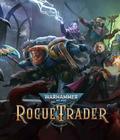
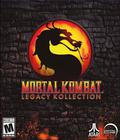
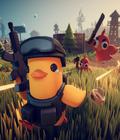



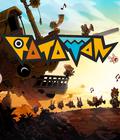
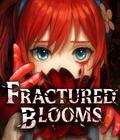

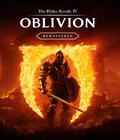 The Elder Scrolls IV: Oblivion Remastered is an RPG with lush visuals, expansive worlds and limitless character customization combine with unprecedented levels of player freedom and NPC interaction.
The Elder Scrolls IV: Oblivion Remastered is an RPG with lush visuals, expansive worlds and limitless character customization combine with unprecedented levels of player freedom and NPC interaction.




